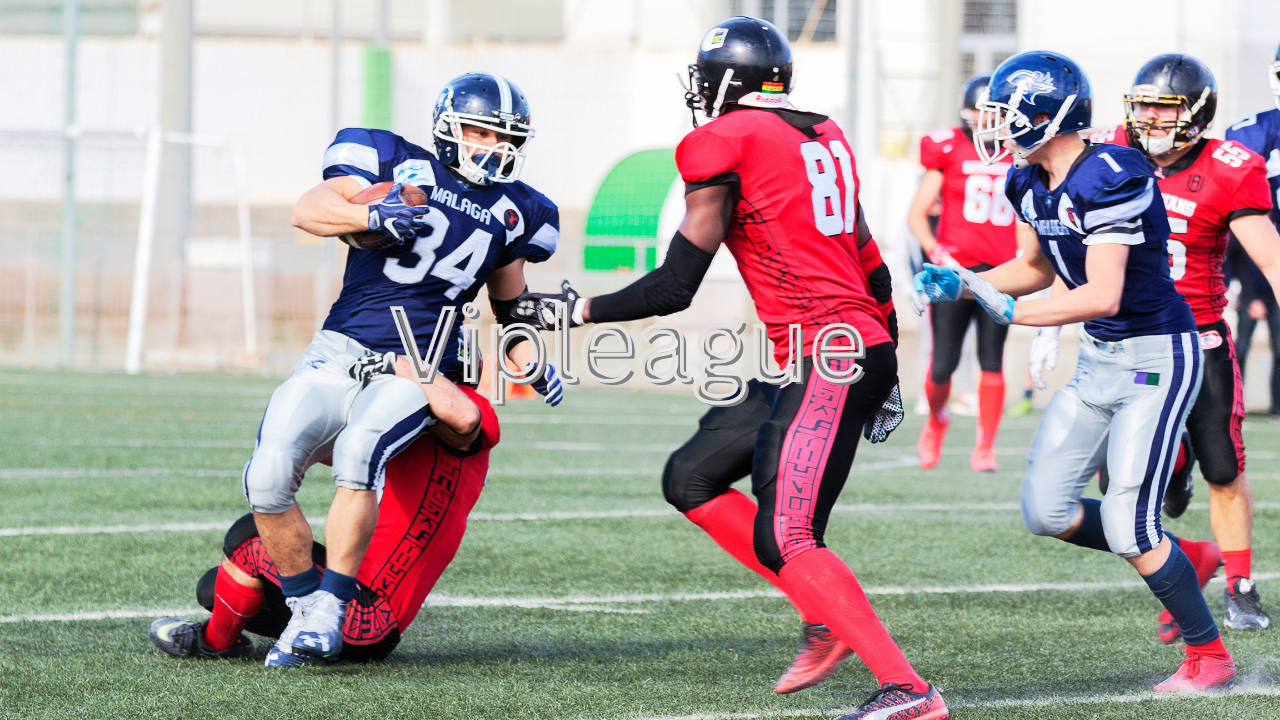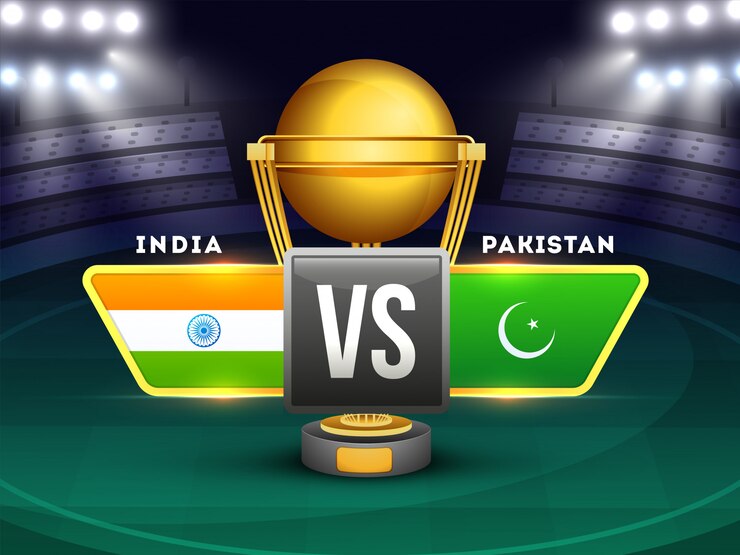Sports
Ballet Barres: Making the Right Choice

A ballet barre (choreographic) is a necessary element of any choreography class. Not one generation of dancers, ballet-masters, and choreographers was brought up on ballet barres. Exercises at the barre at any age will help you improve your physical condition and body shape. This simple device consists of supports and brackets to which a handrail is attached, made of wood, metal, or fiberglass.
A ballet barre is a pillar of support in mastering complex dance elements. Therefore, all self-respecting dance schools and studios are equipped with this construction. Many install ballet barres at home to have an opportunity to train more often.
All ballet barres are divided into single-level and two-level barres which can be stationary (mounted to the wall/floor) or portable.
Ballet barres may have different height of the bracket element mounted to the wall. This is necessary when the mounting height of the mirrors does not allow the use of a standard bracket with an upper mounting point. Therefore, custom brackets with a lower attachment point may be needed to change the height of a barre according to your needs.
Single-level ballet barres are convenient when a person or a group of about the same height or age is involved. Some single-level ballet barres can be adjusted to any height by raising the handrail higher or lower.
Single-level constructions are widespread in ballet schools. They are slightly different in weight and simplicity of the assembly.
A two-level ballet barre with parallel handrails allows people of different height and age to practice simultaneously. That explains the need for a second handrail. Children hold the lower rail, and adults – the upper rail. A standard height of the lower and upper levels are usually between 70 and 110 cm, respectively.
According to The Home Dweller article, professional ballet barres are made of durable metal with handrails of precious woods (oak or beech). Stationary ballet barres, attached to the wall, floor, or both, go with special anchors that extend into a wall and hold the barre reliably.
Handrails are better from oak or beech because these materials can withstand the highest intensity loads. Pine is also a popular material for those – more affordable than beech or oak at a price, but such handrails are more suitable for less intense exercise loads, i.e. better for beginners.
How To Make A Wall-Mounted Ballet Barre
Building a ballet barre for home use is an excellent idea on many ends. For one, you get to work on your DIY skills, and it is thus a fulfilling experience. Secondly, you end up with a bar which you can use to practice your dance moves. With it, you can rehearse what you learn in school so that you can master the steps. It also enables you to make mistakes and learn from them.
Additionally, you get to experiment with various moves, and you should notice a change in your movements over time. The great thing about it is that you can use it whenever the mood strikes, allowing you to practice at your convenience. And if you are looking at it from a financial point of view, it means that you don’t have to rent space in a studio and you will thus save a lot of money. There are tons of reasons why one would install a ballet barre at home, with the ones above being some of the key motivators.
The barre is quite useful in dancing. One, it allows you to learn the basics in ballet and thus makes you a graceful dancer. Two, it enables you to strengthen your muscles, which is something that you will appreciate once you see how strong you’ve become with time. How can you make a barre to help you get the most out of your home dance studio?
You have two options: fixed and portable. The latter option works best for people who do not have adequate space to house a dance studio. It also works best for beginners who are yet to master some moves. However, if you have enough room for a ballet barre, the best option in your case is the fixed barre, and in this case, one that is on a wall. The stability offered by this barre allows you to not only conduct stretching exercises on the bar, but it also aids in helping you maintain balance as you move. Here is how you should go about this:
You should start by selecting the best location for the barre in your room. If you have a dance studio, the best place to have the bar would be on the wall near the mirror. In this way, you can see your movements, and this can help you in bettering your form and technique. If you do not have a studio, you can start by installing a mirror in a place that receives a lot of light before mounting the barre.
You will need several materials for construction. However, that is not to say that the process is at all complicated. You will have fun doing it, and you could probably take up DIY projects in your free time as a result. Who knows?
This project features a single barre. For this, you will need wall anchors, screws, two brackets, and a ballet bar. The bar should be at least four feet long and can be of any of the following materials: wood, PVC and metal. You can have as many screws and wall anchors as you deem fit for the construction.
Material Selection
PVC, wood, and metal are all excellent choices when it comes to making a steady barre. However, they have some differences. PVC and wood are easy to work with, and they are thus great options for someone who is new to DIY. Metal, on the other hand, is difficult to work with, but it provides the most durability of all the three. Thus, if you are looking for a safe option, go with metal.
Measurements
Once you decide on what material works best for you, proceed by measuring how big your studio space is before getting a bar that can comfortably fit in the room. The diameter of the pipe should be about 1 ½ to two inches. You will find that most stores sell pipes in the ranges of ten feet. However, they are willing to cut the pipes in half, and you can look through your options to figure out where you can get a good deal on a bar.
You also need to decide how high the bar will be. Usually, the bar is about three and a half feet above the floor where the dancer is an adult. However, it all depends on the person as the measurements are as per the waist height. Where the intended user is a child, you will need to go much lower than this. You can also opt to have two bars mounted on the wall, where you are in doubt of what height will work best for you.
Mounting
At this point, you need to decide where you will screw the brackets onto the wall. You can start by measuring three points on the wall on the same level as your chosen waist height. A level comes in handy in helping you ensure that the plane is parallel to the floor. Make some markings on the selected points and drill into the wall before inserting the wall anchors, ensuring that you use the appropriate anchors, based on the wall type. Next, fix the bar using a screw that goes into the bracket. Once the screw is secure, you can rest assured that the bar will not rotate when you use it. Do this for all the points.
A few rules for a ballet barre selection and installation process:
- Minimal barre length is 1m, maximum – infinite.
- The maximum distance between supports – 2 m. e.g. for a 2.5 m barre, you need 3 supports installed. If an intense load is planned, the construction can be strengthened by the additional support stand installation.
- The minimal handrail-wall distance is 20-30 cm.
- The handrail diameter is usually 5 cm, this is a well-chosen thickness for dancer’s convenience.
- The floor and wall to which a ballet barre will be mounted must be smooth and of durable material (concrete, brick, etc.). If the surface does not allow mounting a stationary barre, then the portable bare installation is preferable.
- Aim for reliable, comfortable, safe and high-quality ballet barres made to all standards. Pay attention to sharp protrusions and corners. All the supports and brackets should be processed and cleaned to eliminate the presence of “burrs” at welding sites to exclude the risk of injury. Handrails must be polished carefully, the handrail surface – smooth and burr-free.
- A ballet barre installation process is best to be left to a professional with extensive experience.
Your ballet barre is now ready, and you can start practicing as soon as you would like!

Sports
Exploring the Benefits of Vipleague for Sports Streaming Enthusiasts

Welcome to the thrilling world of sports streaming! If you’re a passionate fan who can’t bear missing a single game, match, or tournament, then you’ve come to the right place. In this digital age, online platforms have revolutionized how we consume our favourite sports events. One platform that has gained immense popularity among sports streaming enthusiasts is Vipleague.
Whether you’re an avid follower of football, basketball, tennis, or any other sport under the sun, Vipleague offers a gateway to endless hours of exhilarating action. From live matches to highlights and replays, this platform brings the stadium atmosphere directly into your living room—all at the click of a button!
But before we dive deeper into the benefits and features of Vipleague for all you sports lovers out there, let’s take a moment to explore how online sports streaming has evolved over time. So grab your jersey and get ready for an exciting journey through the history and evolution of this phenomenon!
The History and Evolution of Online Sports Streaming
In the not-so-distant past, sports enthusiasts were limited to watching their favorite teams on television or attending live games. However, with the rapid advancements in technology, a new era of online sports streaming emerged, forever changing the way we consume sports content.
It all began with basic live streams that offered low resolution and frequently experienced buffering issues. These early platforms paved the way for what would become a revolution in sports viewing. As internet speeds increased and video quality improved, more sophisticated platforms like Vipleague entered the scene.
Vipleague has been at the forefront of this evolution by offering users access to a wide range of sporting events from around the world. Whether it’s football matches, basketball games, tennis tournaments, or even niche sports like cricket or esports, Vipleague provides a comprehensive streaming experience.
One major factor that has contributed to the rise of online sports streaming is its convenience. With just a few clicks or taps on your device, you can instantly tune into any game you desire without being tied down to traditional cable subscriptions.
Moreover, online sports streaming offers flexibility in terms of time and location. No longer do fans have to rearrange their schedules or miss out on important moments because they’re away from home. With Vipleague and other similar platforms readily available on smartphones and tablets, you can catch every thrilling goal or breathtaking dunk wherever you are.
Another significant aspect is cost-effectiveness. Traditional cable packages can be expensive and often include channels that are irrelevant to your interests as a sports fan. On top of that hefty price tag come additional charges for premium channels offering exclusive sporting events.
In contrast, VIP League eliminates these unnecessary expenses by providing free access to an extensive selection of live games across various leagues worldwide—no subscription fees required!
However,vigilance is essential when exploring free online streaming options like Vipleague due to potential copyright violations.
There may also be quality limitations and occasional pop-up ads that can disrupt your viewing experience.
Features of Vipleague
Vipleague is a popular online platform that offers sports enthusiasts the opportunity to stream their favorite games and matches right from the comfort of their own homes. With its user-friendly interface and extensive range of features, Vipleague has become a go-to destination for fans looking to catch all the live sporting action.
One of the standout features of Vipleague is its vast selection of sports channels. Whether you’re into football, basketball, tennis, or even niche sports like curling or darts, Vipleague has got you covered. The platform provides access to a wide array of channels dedicated to different sports events from around the world.
In addition to its diverse channel lineup, Vipleague also offers high-quality streaming capabilities. Users can enjoy crisp and smooth video playback without any lagging or buffering issues. This ensures that viewers don’t miss out on any crucial moments during their favorite games.
Another great feature of Vipleague is its compatibility with various devices and platforms. Whether you prefer watching on your desktop computer, laptop, smartphone, or tablet, Vipleague allows seamless streaming across multiple devices. This flexibility means that you can tune in wherever you are and catch up on all the sporting action on-the-go.
Furthermore, Vipleague provides users with a comprehensive schedule of upcoming matches and events. This feature allows fans to plan ahead and never miss out on their favorite teams’ games again. The schedule includes information about match timings as well as broadcast details so users can easily find where they need to go for each game.
Additionally, one notable aspect of using Vipleague is its cost-effectiveness compared to traditional cable TV subscriptions or pay-per-view services. While some premium content may require a small fee or subscription package upgrade, many sporting events are available free-of-charge on this platform.
Overall, Vipleauge’s impressive range of features makes it an ideal choice for avid sports fans who want convenient access to live streaming and a wide variety of sports channels. Whether you’re watching the big game
Pros and Cons of Using Vipleague for Sports Streaming
When it comes to sports streaming, Vipleague has gained a reputation as one of the go-to platforms for enthusiasts. However, like any other service, it also has its pros and cons that users should be aware of before diving in.
One of the biggest advantages of using Vipleague is its extensive selection of sports events. From football to basketball, tennis to cricket, you can find live streams and replays for almost any sport you can think of. This variety ensures that there is always something exciting to watch at any given time.
Another major benefit is the convenience factor. With Vipleague, you don’t need expensive cable subscriptions or satellite dishes. All you need is an internet connection and a compatible device, such as your smartphone or laptop. This means that you can enjoy your favorite sports on-the-go or from the comfort of your own home.
Furthermore, Vipleague provides free access to its content. Unlike some paid streaming services, where you have to shell out monthly fees or pay-per-view charges, Vipleague allows users to stream sports events without spending a dime. This affordability makes it accessible for people who may not have the financial means to subscribe to premium services.
However, along with these benefits come a few drawbacks worth considering. One potential downside is the reliability and quality of streams on Vipleague. Since it relies on third-party sources for streaming links, there may be instances where streams are laggy or low-resolution. Additionally, due to copyright issues and legal restrictions in certain regions, some games may not be available on the platform.
Moreover,because Vipleague offers free access to its content,it heavily relies on advertisements as its main source of revenue.
This results in frequent pop-up ads during streams, which can interrupt your viewing experience.
Additionally,some ads might contain malware that compromises security.
So,you need to take the necessary precautions while using this site.
Vipleague offers a wide range of sports content for free.
How to Use Vipleague for an Optimal Viewing Experience
Vipleague offers sports streaming enthusiasts a wide range of options to enhance their viewing experience. To make the most of this platform, here are some tips on how to use Vipleague for optimal viewing:
1. Explore the website:
Start by familiarizing yourself with the layout and navigation of Vipleague. The website is designed to provide easy access to various sports events and leagues.
2. Choose your sport:
Vipleague covers numerous sports, from football and basketball to cricket and tennis. Select your preferred sport from the menu or search bar.
3. Find live streams:
Once you’ve chosen a sport, look for live streams available at that moment. Vipleague provides multiple links for each event, so if one doesn’t work well, you can quickly switch to another.
4. Check the game schedule:
If you want to plan ahead, check the game schedule section on Vipleague’s homepage or specific sport pages. This allows you to anticipate upcoming matches and ensure you don’t miss any action.
5. Optimize video quality:
Depending on your internet speed or device capabilities, adjust the video quality settings for smoother streaming. Higher quality may require faster internet connections, but it offers better clarity.
6. Remote Streaming Options:
If you prefer watching games on larger screens, like TVs or projectors, consider using remote streaming options such as Chromecast or connecting your device via HDMI cable.
7. Explore Additional Features:
Vipleague also provides extra features like chat rooms where users can discuss ongoing matches in real-time with other fans around the world.
8. Be mindful of pop-up ads:
Be aware that pop-up ads may appear when navigating through different streams or events on Vipleague. Ensure that you have reliable adblocker software installed beforehand for uninterrupted viewing pleasure. Following these tips will help optimize your experience while using VipLeague as a dedicated streaming platform for all your favorite sporting events!
Alternatives to Vipleague
If you’re a sports streaming enthusiast, you may be on the lookout for alternative platforms to Vipleague. While Vipleague offers a wide range of sporting events and is popular among fans, it’s always good to have options. Here are a few alternatives that you can explore:
1. Reddit Streams:
Reddit has become a hub for sports enthusiasts looking for live streams of their favorite games. Subreddits dedicated to various sports offer links and discussions about where to find reliable streams.
2. Sportsurge:
Sportsurge is another popular platform that provides free streaming links for various sporting events. It has gained popularity due to its user-friendly interface and consistent stream quality.
3. ESPN+:
If you’re willing to invest in a subscription service, ESPN+ is worth considering. It offers live streaming of numerous sports events, including exclusive coverage of certain leagues like the UFC and NHL.
4. CBS All Access:
If you’re specifically interested in American football or basketball, CBS All Access provides access to NFL games as well as NCAA basketball games.
5. YouTube TV:
This paid streaming service not only offers access to major networks but also includes channels dedicated solely to sports such as ESPN, Fox Sports, NBC Sports Network, and more.
Remember that while these alternatives provide options for your sports streaming needs, they each come with their own pros and cons depending on your preferences and budgetary considerations.
Conclusion
Vipleague has emerged as a popular platform for sports streaming enthusiasts, offering a wide range of benefits and features. With its user-friendly interface, extensive collection of sporting events, and high-quality streaming capabilities, Vipleague provides an optimal viewing experience for fans worldwide.
The history and evolution of online sports streaming have paved the way for platforms like Vipleague to thrive. As technology continues to advance, the accessibility and convenience of watching live sports online have become more widespread. Vipleague stands at the forefront of this digital revolution by providing users with an extensive selection of sporting events from around the globe.
One of the key advantages of using Vipleague is its comprehensive range of features. From live streams to replays, users can access their favorite games whenever they want. The platform also offers multiple links for each event, ensuring that viewers can find a reliable stream even during peak times.
However, it’s important to note that there are some drawbacks associated with using Vipleague. Due to copyright restrictions and legal concerns, certain sporting events may not be available or may require additional steps to access them. Additionally, users may encounter intrusive ads while navigating through the website.
To maximize your viewing experience on Vipleague, here are a few tips:
1. Use a reliable internet connection. A stable internet connection will ensure smooth streaming without interruptions or buffering issues.
2. Install an ad blocker: By installing an ad blocker extension on your browser, you can minimize distractions caused by intrusive advertisements.
3. Enable full-screen mode: To fully immerse yourself in the game action, enable full-screen mode while watching on Vipleague.
4. Look into alternative links: If one link isn’t functioning properly or is lagging during a live stream event, try switching to another link that Vipleague has provided.
Sports
Sports Guru Pro India VS Pak: A Comprehensive Guide

Sports Guru Pro India VS Pak matches bring a centuries-old rivalry to the pitch, captivating spectators around the globe. To forecast future matches, it takes into account a wide range of data, such as previous results, head-to-head records, injury status, schedule strength, and player chemistry, among other things.
An fierce rivalry has existed between Pakistan and India for generations. While creating amazing moments and igniting powerful emotions in spectators, their matches have the power to bring an entire region together or drive a wedge between it.
When it comes to cricket, India and Pakistan have been rivals for quite some time. For their respective fan bases, their encounters are remarkable due to the intense battles that take place.
On top of that, the rivalry between these two adjacent countries elevates the matches to cultural events, creating indelible memories for spectators and delivering high-energy games. Accurate forecasts guarantee fans even more memorable experiences from these legendary rivalries and up the drama factor even further.
Can You Explain Sports Guru Pro India vs. Pakistan?
Cricket matches between Pakistan and India are cultural events that captivate millions of followers across the globe; they are not just sports. These matches provide remarkable experiences, from historic moments like Javed Miandad’s last-ball six to heated disputes among players. Predictions and analysis of this centuries-old rivalry are provided by Sports Guru Pro in India vs. Pakistan.
The animosity between India and Pakistan goes well beyond soccer, since the two nations participate in a wide variety of athletic events. For example, both countries’ populations love field hockey, and the sport frequently makes an appearance at major international competitions like the Olympics and the World Cup—something that fans can easily follow with Sports Guru Pro’s comprehensive coverage of all events.
Not only does Sports Guru Pro India vs. Pak analyze both teams, but it also predicts the outcomes of each match. If you want to wager more intelligently on future matches, their experts will take each team’s past performances and current dynamics into account when predicting the probabilities of winning.
Playing Sports Guru Pro is easy and accessible, but getting the hang of timing and shot selection while up against good bowlers takes time. Move about the crease with the joystick controls, and hit different shots by swiping in different directions. Gesture mode adds some extra fun by allowing you to physically imitate actual cricket shots by using the motion sensors on your smartphone.
Legendary Players
Though their rivalry goes well beyond the cricket field, the animosity between India and Pakistan remains high. When these two sides clash, it goes beyond sports and into cultural politics, frequently leading to unforgettable events.
The cultural rivalry between Pakistan and India goes beyond mere athletic rivalry; it symbolizes a tremendous struggle for the hearts of every sports fan who watches their contests, and it does so across national boundaries, inspiring ardent fan bases.
An intriguing battle between Pakistan and India is in the works, and it will include some of the best cricket players in the world. India and Pakistan both have formidable batting combinations, but Virat Kohli, one of the best hitters of all time, and his immense fan base give the impression that India is the better team.
On top of that, he’s a master spin bowler, so he’ll have no trouble dispatching the opposition’s spinners. India will be looking to extend its winning streak against Pakistan, as it has been performing admirably as of late. In recent years, Pakistan has transformed into one of Asia’s top teams; last year’s World Cup semi-final appearance was definitely cause for celebration!
The two countries have a deep history together in numerous sports, including cricket, but also in field hockey and kabaddi, two games that demand exceptional physical and strategic skill to succeed. Spectators adore sharing their excitement for these thrilling matches online!
Incredible Get-togethers
Throughout the history of Sports Guru Pro India VS Pak, there have been numerous significant events. Everyone who has ever cared about cricket will never forget the quarterfinal match between India and England in Bangalore in 1996. This historical rivalry also saw a turning point in the 2007 Twenty20 World Cup final, which India went on to win.
The Passionate Supporters
No assessment of this rivalry would be comprehensive if it omitted the passionate followers of both nations. The cricket matches between Pakistan and India are a cultural phenomenon as well as a competitive event. The stands are adorned with colorful banners and the enthusiastic cries of Bharat Mata Ki Jai and Pakistan Zindabad.
Cricket Diplomacy
Pakistan and India have a long history of strained diplomatic relations due to their animosity. The two countries have utilized cricket for political purposes. The 2004 and 2005 visits to Pakistan and India, respectively, highlighted a marked improvement in relations. There were some thrilling bouts and improved diplomatic relations as a result of these shows.
The Effects Go Beyond Cricket
Several domains have been impacted by this competition. It has an impact on literature and documentaries. The fact that it sparked the Indo-Pak cricket diplomacy series is more proof that sports can bring people together.
The Conflict That Remains
The Pro Sports Tutor As new cricketers step up to the plate, animosity between India and Pakistan is heating up. Every game writes a new chapter in the continuing story of this iconic encounter, and the emotion is still there.
Sports Guru Pro India vs. Pakistan History
Cricket lovers can’t wait for the next chapter of Sports Guru Pro: India vs. Pakistan. Beyond being a simple contest between two cricket teams, this rivalry celebrates culture, sportsmanship, and the eternal spirit of cricket. If only for a short time on the cricket field, this competition may bring people together from all over the world.
FAQ’S
Q: Is there a particular match between Pakistan and India that stands out in Sports Guru Pro history?
Countless unforgettable events, from thrilling finishes to legendary performances, have been witnessed by both teams throughout the rivalry, cementing their place in sports lore.Q: In a contest like this, how can the two teams get ready for the inevitable pressure?
The two squads prepare for the tremendous pressure of their strong competition by engaging in strenuous training regimens that emphasize strategy, physical fitness, and mental toughness.
Q: Is there going to be a lineup change for the upcoming match?
Even though anything can happen, in games that matter a lot, teams typically play their starting lineup. On the other hand, alterations made at the last minute can introduce an element of uncertainty.
Q: In the grand scheme of things, how does the Sports Guru Pro match between India and Pakistan fit into the story?
This battle has wider cultural and national implications than only the game; it also has the potential to influence the political and social climate.
Q: How can people watch the India vs. Pakistan match live on Sports Guru Pro?
If you want to see the drama of this epic duel as it happens, you’ll have to tune in to official broadcasters or streaming services.
Q: Is the match still on? Is it possible to change the date?
While anything can happen, the match will most certainly go ahead as planned if the organizers are given the go light. Official channels would be used to communicate such changes.
Sports
The History and Origin of Futbolear

Welcome to the thrilling world of Futbolear, a game that has captivated hearts and minds for centuries! Whether you’re an avid sports enthusiast or simply curious about the origins of this beloved pastime, join us on a journey through time as we uncover the fascinating history and cultural significance of Futbolear. From its humble beginnings to its global popularity today, prepare to be amazed by the evolution and enduring legacy of this exhilarating sport. So grab your ball and lace up your boots – let’s dive into the captivating world of Futbolear!
The Origins of the Game
Futbolear, a game beloved by millions around the world, has a rich and fascinating history that dates back centuries. While its exact origins are debated among scholars, there is evidence to suggest that variations of this sport have been played for thousands of years.
One theory traces Futbolear’s roots back to ancient civilizations such as the Mayans and Aztecs in Mesoamerica. They were known to engage in ball games using their feet, hands, or hips to strike a ball made from natural materials like rubber. These early versions of the game often had religious or ritualistic significance.
Another theory suggests that Futbolear evolved from similar ball games played across Europe during medieval times. In these games, teams would compete to kick a ball into goals positioned at opposite ends of a field.
Regardless of its precise origins, one thing is clear: Futbolear has captured hearts and ignited passions throughout history. From humble beginnings on dusty village squares to grand stadiums packed with roaring fans, it has transcended cultural boundaries and become truly global in nature.
Stay tuned for our next blog post where we explore the cultural significance of Futbolear!
Cultural Significance of Futbolear
Futbolear, a game that has captured the hearts and minds of people around the world, holds immense cultural significance. This sport not only brings communities together but also embodies their values and traditions.
In many countries where futbolear is played, it serves as a symbol of national identity. The passion and pride displayed by fans during matches reflect their deep-rooted connection to their heritage. Whether it’s the rhythmic chants or vibrant displays of team colors, futbolear becomes an expression of collective unity.
Moreover, futbolear transcends language and cultural barriers. It acts as a universal language, allowing individuals from diverse backgrounds to communicate through their shared love for the game. This inclusivity fosters cross-cultural understanding and promotes harmony among nations.
Additionally, futbolear often acts as a platform for social change. Players become role models who inspire others with their dedication and perseverance on the field. Through charitable initiatives led by clubs or players themselves, this sport has contributed significantly to various causes such as education, healthcare, and poverty alleviation.
Furthermore, futbolear influences art forms like music and literature in many cultures worldwide. Songs are composed in praise of legendary players or iconic moments in matches while books capture the emotions associated with the sport – be it joyous celebrations or heartbreaking defeats.
The cultural significance of futbolear extends beyond its impact on individuals; it shapes communities at large too. Local economies thrive during major tournaments as fans flock to stadiums or gather in public spaces to cheer for their teams. Businesses benefit from increased tourism while street vendors capitalize on opportunities created by bustling match days.
In conclusion (not concluding here), futbolera’s cultural significance cannot be overstated – it unites people across borders while celebrating diversity within them!
Evolution of the Rules and Equipment
The evolution of the rules and equipment in Futbolear has played a significant role in shaping the game we know today. In its early days, Futbolear was a simple sport with minimal regulations. Players would use any ball they could find, often made from animal bladders or stuffed fabric.
As the popularity of Futbolear grew, so did the need for standardized rules to ensure fair play. The first set of official rules was established in 1872 by the International Futbolear Association (IFA). These rules included guidelines on player positions, fouls, and scoring methods.
Over time, advancements in technology led to changes in equipment used during matches. The traditional leather ball gave way to more durable synthetic materials that provided better control and accuracy for players. Similarly, footwear evolved with specialized cleats designed for different playing surfaces.
In recent years, technology has also had an impact on officiating and gameplay. Video assistant referee (VAR) systems have been introduced to help referees make more accurate decisions during matches. Additionally, wearable technologies such as GPS trackers are being used to monitor player performance and prevent injuries.
The constant evolution of rules and equipment reflects not only societal changes but also a desire to improve the game’s fairness and safety. As futboleros continue pushing boundaries both on and off the field, it will be fascinating to see how this beloved sport continues its journey into the future
Spread and Popularity of Futbolear
Futbolear began as a regional sport, played primarily in the small villages of South America. However, over time, it has gained widespread recognition and popularity across the globe. The unique blend of soccer and volleyball has captivated sports enthusiasts everywhere.
One of the key factors contributing to its spread is social media. With just a few clicks, people from different corners of the world can now watch thrilling Futbolear matches online. Spectacular goals and incredible acrobatic moves are shared virally, fueling interest in this mesmerizing game.
Additionally, international tournaments have played a significant role in popularizing Futbolear on a global scale. These events bring together top players from various countries who showcase their skills while competing for prestigious titles.
Furthermore, sports clubs and organizations have recognized the potential of Futbolear as an exciting addition to their programs. They organize local leagues and tournaments that attract both players and spectators alike. This grassroots approach further contributes to spreading awareness about this unique sport.
As more people experience the thrill of playing or watching Futbolear firsthand, word-of-mouth promotion also plays a vital role in its increasing popularity. Enthusiastic participants share their excitement with friends and family members who become curious about trying out this exhilarating game themselves.
In recent years, some nations even added Futbolear to school curriculums as part of physical education programs – helping introduce younger generations to this dynamic sport at an early age.
All these factors combined have led to an exponential growth in the number of individuals playing or following Futbolear worldwide. As new fans continue to discover this captivating hybrid game between soccer and volleyball, its popularity shows no sign of waning anytime soon!
Famous Players and Teams in Futbolear
When it comes to Futbolear, there have been countless players and teams that have left an indelible mark on the sport. From skilled individuals who can effortlessly weave through defenders to formidable teams known for their tactical prowess, the world of Futbolear has seen its fair share of legends.
One name that immediately springs to mind is Diego Maradona. The Argentinean maestro was a true icon in the game, known for his incredible dribbling skills and unforgettable goals. His infamous “Hand of God” goal during the 1986 World Cup is etched into football history forever.
Another exceptional player is Pelé, often regarded as one of the greatest footballers of all time. With his natural talent and remarkable scoring ability, Pelé led Brazil to three World Cup victories in 1958, 1962, and 1970.
In terms of teams, it’s impossible not to mention Barcelona FC. This Spanish powerhouse has dominated both domestic leagues and international competitions with their mesmerizing style of play dubbed “tiki-taka.” Led by Lionel Messi during his prime years at Camp Nou, Barcelona achieved unprecedented success with numerous league titles and Champions League triumphs.
On the international stage, Germany stands out for its consistent excellence over decades. Known for their disciplined approach and meticulous planning under coaches like Jürgen Klinsmann and Joachim Löw, Germany clinched four FIFA World Cup trophies throughout their storied history.
These are just a few examples among many other extraordinary players such as Cristiano Ronaldo, Neymar Jr., Zinedine Zidane or Ronaldinho – each leaving an indelible imprint on the beautiful game we call Futbolear.
Controversies and Challenges Faced by the Sport
Controversies and challenges have always been a part of any sport, and Futbolear is no exception. Over the years, this beloved game has faced its fair share of controversies that have sparked debates among fans and players alike.
One of the most notable controversies in Futbolear occurred in 19XX when a player was accused of using performance-enhancing substances during a crucial match. This incident not only tarnished the reputation of the player but also raised concerns about fair play within the sport.
Another challenge that Futbolear has faced is financial inequality among teams. Some clubs have significantly larger budgets than others, leading to an uneven playing field. This disparity can be seen in transfer fees, salaries, and access to top-quality training facilities. Critics argue that this creates an imbalance and hampers smaller teams’ ability to compete on equal footing with their wealthier counterparts.
Additionally, there have been instances where controversial referee decisions or questionable officiating calls have sparked outrage among fans. These moments often result in heated discussions both on and off the field.
In recent years, there has also been growing concern over injuries sustained by players during matches. The physical nature of Futbolear sometimes leads to serious collisions or tackles that cause long-term damage to players’ health. As awareness grows around sports-related concussions and other injuries, there are ongoing efforts to improve safety measures within the game.
Despite these controversies and challenges, Futbolear remains a deeply cherished sport worldwide for its excitement, skillful gameplay, and passionate fanbase. It continues to evolve as stakeholders work together to address these issues ensuring fairness while preserving its essence as a beautiful game loved by millions across cultures and continents.
Modern Innovations and the Future of Futbolear
In recent years, futbolear has seen a surge in popularity worldwide, thanks to several innovative advancements that have transformed the game. One such innovation is the introduction of wearable technology for players. From smart jerseys that monitor heart rate and performance metrics to GPS-enabled cleats that track player movements on the field, these technological advancements have revolutionized how players train and compete.
Additionally, there have been significant developments in the design and construction of futbolear equipment. Lightweight yet durable materials now make up balls, goalposts, and protective gear, enhancing player safety while ensuring optimal performance. The incorporation of new technologies into ball manufacturing has also led to improved accuracy and control during gameplay.
Furthermore, digital platforms have played a crucial role in shaping the future of futbolear. Online streaming services allow fans from around the world to watch live matches and access exclusive content. Social media platforms provide a space for supporters to engage with their favorite teams and players directly.
Looking ahead, it is clear that futbolear will continue to evolve with emerging technologies. Virtual reality (VR) training programs may soon become commonplace among professional teams as they offer immersive experiences for skill development. Additionally, augmented reality (AR) could enhance spectator experiences by overlaying real-time statistics or virtual replays onto live broadcasts.
As futbolear continues its global expansion, efforts are being made to ensure inclusivity at all levels of play. Initiatives are underway to promote gender equality within the sport through increased participation opportunities for women and girls.
With ongoing innovations driving its growth trajectory forward, it’s safe to say that the future looks bright indeed! The blend of tradition with modern advancements ensures an exciting path ahead for this beloved sport.
Conclusion: The Enduring Legacy of Futbolear
As we delve into the rich history and origin of Futbolear, it becomes evident that this sport holds a special place in the hearts of millions around the world. From its humble beginnings on dusty streets to its modern-day global popularity, Futbolear has truly stood the test of time.
The cultural significance of this game cannot be overstated. It serves as a unifying force, bringing people together regardless of their background or nationality. Through vibrant displays of skill and teamwork, players have transcended language barriers and fostered connections that go beyond mere competition.
Over the years, Futbolear has evolved both in terms of rules and equipment. From improvised balls made out of socks to technologically advanced gear designed for optimal performance, every innovation has contributed to enhancing the overall playing experience.
One cannot discuss Futbolear without acknowledging some famous players and teams who have left an indelible mark on this sport. Their extraordinary skills and achievements continue to inspire future generations to pick up a ball and chase their dreams on the pitch.
Of course, no journey is devoid of challenges or controversies. Throughout its existence, Futbolear has faced criticisms regarding player conduct, officiating decisions, and financial inequalities within the sport. However, these obstacles have only served as opportunities for growth and improvement.
Looking ahead to the future of Futbolear, we can expect continued innovations that will further enhance gameplay while maintaining respect for tradition. As technology advances at an astonishing pace with virtual reality training programs and smart stadiums becoming commonplace; it’s clear that our beloved sport will adapt accordingly.
-

 Health2 weeks ago
Health2 weeks agoHealthcare management consulting: Navigating the complexities of an evolving sector
-

 Home Improvement2 weeks ago
Home Improvement2 weeks agoHow to Maintain Your Residential Heating System for Optimal Performance
-

 Home Improvement2 weeks ago
Home Improvement2 weeks agoMaximizing Home Comfort and Efficiency with Innovative Floor Vent Designs
-

 Home Improvement1 week ago
Home Improvement1 week agoEnhancing Home Comfort with Residential Screen Doors: Benefits and Selection Tips
-

 Health1 week ago
Health1 week ago6 Ways Cupping Therapy is Enhancing Wellness in Geneva
-

 General21 hours ago
General21 hours agoAre Electric Cars or Gasoline Cars Cheaper?